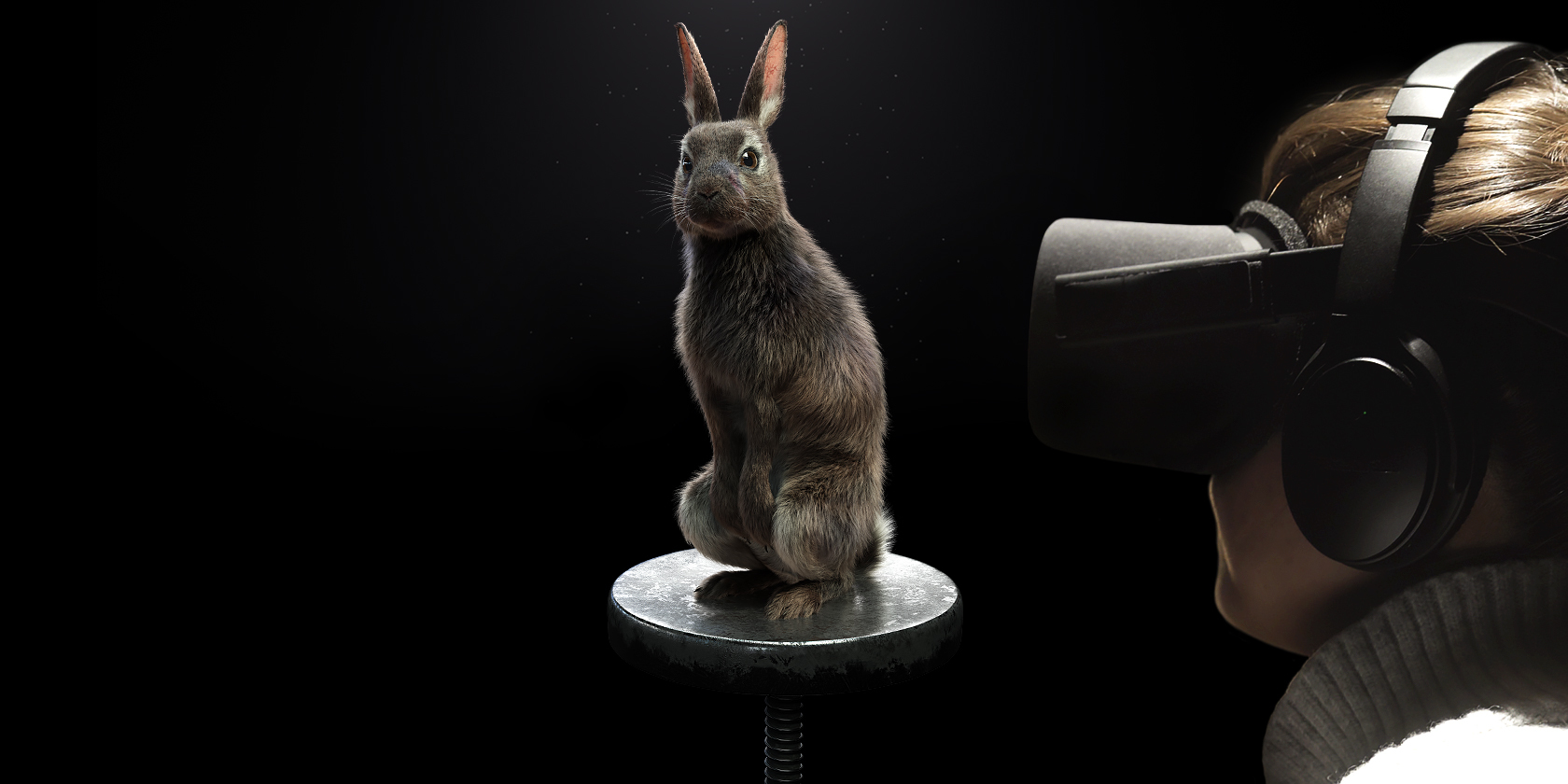
Empathetic Virtual Reality - how we used real-time VR to trigger an emotional journey
Emotional influence is THE keyword in immersive virtual reality. The user is fully engaged and this moment of attention can be utilized for a good cause. The Virtual Reality Experience "Eye to Eye", which we developed together with animal protection organization PETA and marketing agency Kolle Rebbe, plays with a new way of communication and questions the interaction between humans and animals in a virtual environment. The user can have a genuine dialogue with a digital rabbit and is thus better informed about the conditions of animal husbandry worldwide.
Facial expressions and speech are transferred from an actor to a virtual animal using motion-capture. This means that one no longer reacts only to 3D representations in the story, but interprets concrete messages on a personal level in order to be sensitized to the suffering of the animals and to a better alternative for dealing with them. Our experiment has already made hundreds of people rethink their behavior, and even had an effect on some Demodern employees who have decided to live vegetarian.
The perfect simulation
Virtual reality applications are "empathy machines": the user puts on glasses and visits places they would never otherwise go. With the help of the technology, they can have new experiences for the first time, and perceive the virtual situations as almost real. Emotions such as joy, sadness and fear are experienced more intensively. The viewer becomes an eye witness or even protagonist. Such a change of perspective can bring about positive changes in people's communication or way of thinking. People are more willing to get involved with ideas that at first seem to contradict their own concept of life, and so VR applications inherently belong to media genres with the strongest empathic influence.

Especially in virtual reality we can offer users a perfect simulation. If users perceive only artificially generated images and sounds, subtle means are sufficient to draw attention to them. In result, a captivating magic moment is born. It is precisely the enclosed space in the virtual world that makes natural interaction possible, because nothing distracts the attention of the user.
In order not to disturb the immersion, we do not use controllers or other aids in the VR application we developed with IKEA for example. Everything can be controlled via line of sight and simple gestures such as nodding the head. Additionally, if the time of day, room or lighting mood changes, it is immediately clear that there is new content and interaction possibilities. Thanks to these streamlined navigation methods, our applications can appeal to a wider span of users and not just the target audience of "digital natives".
Virtual Reality - even more realistic in the future?
Virtual Reality can transport people into situations they would not normally experience. Our applications already show today that virtual worlds as an immersive medium are capable of influencing people emotionally. In the future, however, much more will happen. We can be curious.

